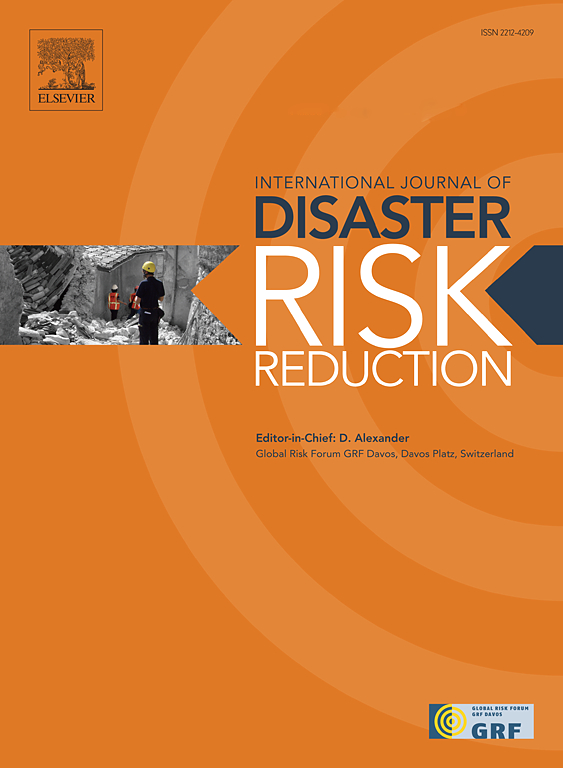A fire following earthquake spread model considering building height and its application to real-world events
IF 4.2
1区 地球科学
Q1 GEOSCIENCES, MULTIDISCIPLINARY
International journal of disaster risk reduction
Pub Date : 2025-01-30
DOI:10.1016/j.ijdrr.2025.105261
引用次数: 0
Abstract
Fire following earthquake is one of the most destructive secondary disasters induced by earthquakes. Current spread models for fire following earthquake generally simulate fires by treating an individual building as a single analytical element and disregarding the influence of building height and topography. In real-world cases, the building heights in the neighborhood vary, which significantly complicating the FFE spreading. The height disparities between structures may directly impact the temperature increase effects of a burning building on its surroundings. Thus, this study proposes a simulation method for fire spread following earthquake that considers building height. The analytical approach treats each building story as an analysis element and incorporates the absolute height of each floor (defined as the summation of building height and site elevation) into the spread model, thereby accounting for the influence of height disparities on fire propagation. To validate the effectiveness of this method, comparative validation studies are conducted using the 1995 Great Hanshin Earthquake and the 2024 Noto Peninsula Earthquake. The proposed model achieves an accuracy of 99.3 % in the 1995 Great Hanshin Earthquake case and 90.9 % in the 2024 Noto Peninsula Earthquake case. Results also indicate that incorporating building height leads to accelerated fire spread and expanded spread range, more accurately capturing the complex dynamics of fire spread following earthquake in building clusters, particularly in scenarios with substantial variations in building heights, thus providing a scientific foundation for urban disaster prevention, mitigation, and fire control strategies.
求助全文
约1分钟内获得全文
求助全文
来源期刊

International journal of disaster risk reduction
GEOSCIENCES, MULTIDISCIPLINARYMETEOROLOGY-METEOROLOGY & ATMOSPHERIC SCIENCES
CiteScore
8.70
自引率
18.00%
发文量
688
审稿时长
79 days
期刊介绍:
The International Journal of Disaster Risk Reduction (IJDRR) is the journal for researchers, policymakers and practitioners across diverse disciplines: earth sciences and their implications; environmental sciences; engineering; urban studies; geography; and the social sciences. IJDRR publishes fundamental and applied research, critical reviews, policy papers and case studies with a particular focus on multi-disciplinary research that aims to reduce the impact of natural, technological, social and intentional disasters. IJDRR stimulates exchange of ideas and knowledge transfer on disaster research, mitigation, adaptation, prevention and risk reduction at all geographical scales: local, national and international.
Key topics:-
-multifaceted disaster and cascading disasters
-the development of disaster risk reduction strategies and techniques
-discussion and development of effective warning and educational systems for risk management at all levels
-disasters associated with climate change
-vulnerability analysis and vulnerability trends
-emerging risks
-resilience against disasters.
The journal particularly encourages papers that approach risk from a multi-disciplinary perspective.
 求助内容:
求助内容: 应助结果提醒方式:
应助结果提醒方式:


